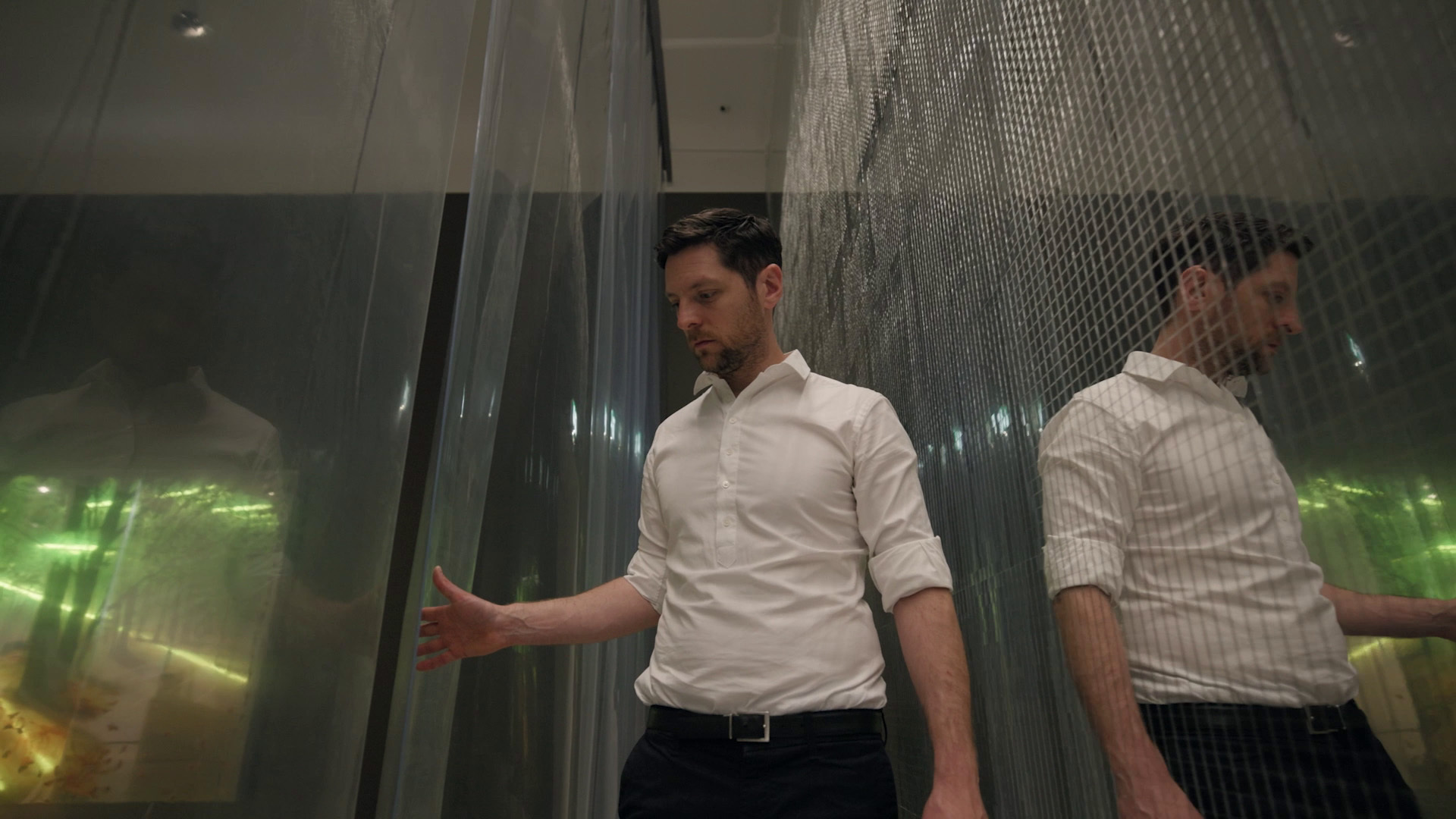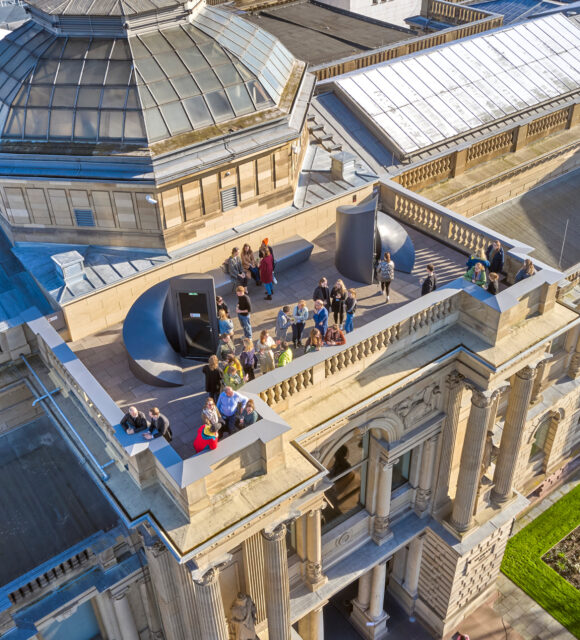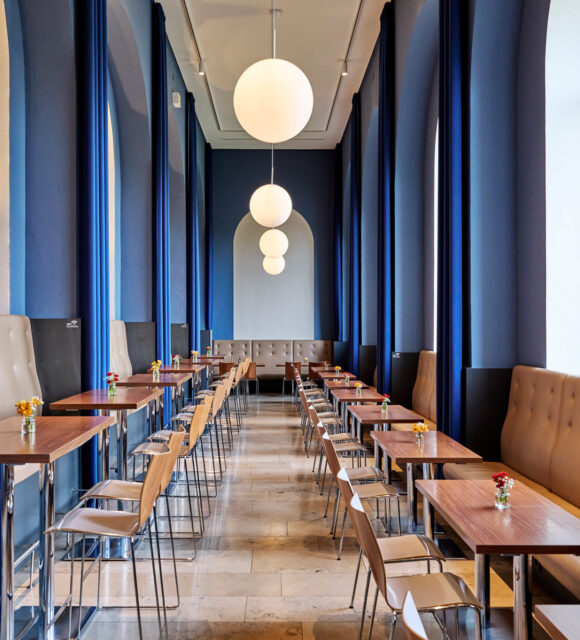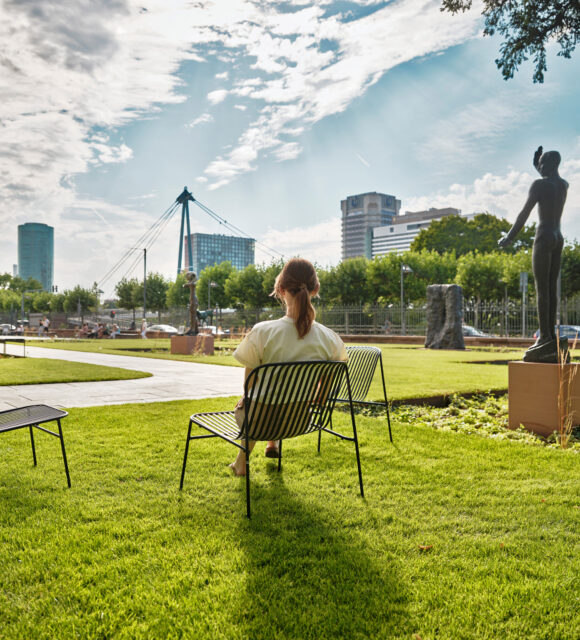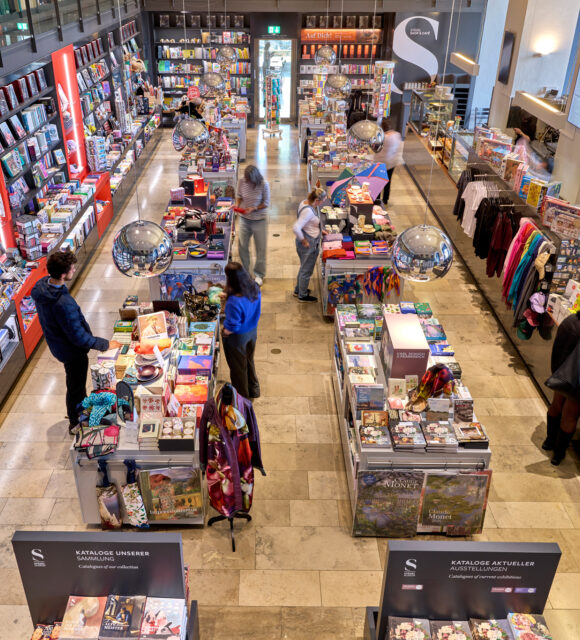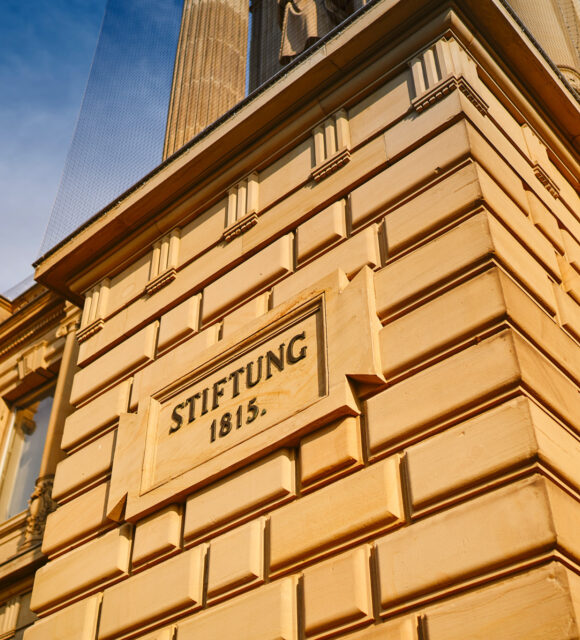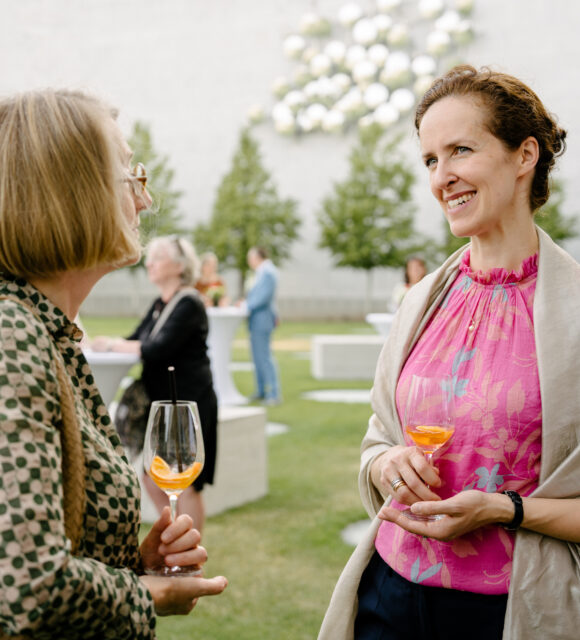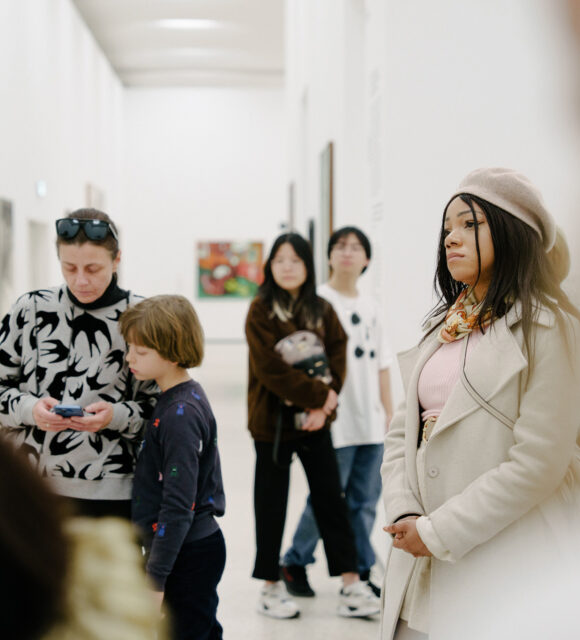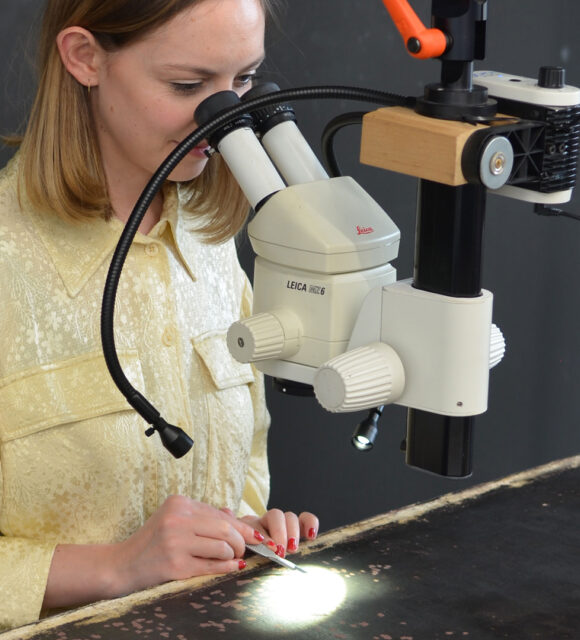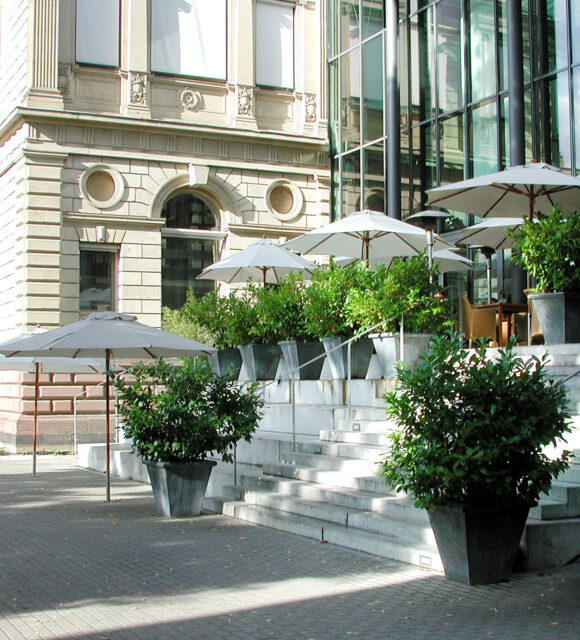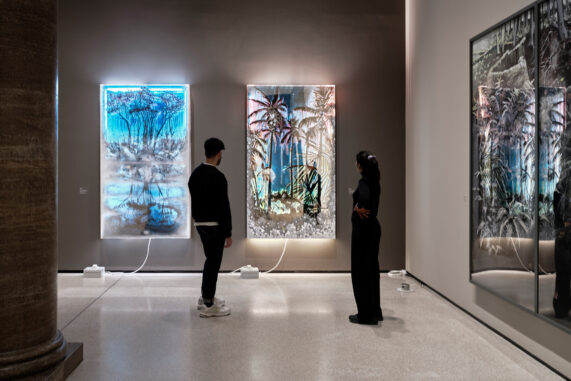
About the Exhibition
Illusion and the questioning of reality are key motifs in the œuvre of artist Philipp Fürhofer (born 1982). At the interface between installation and painting, his works depict complex pictorial worlds. The Städel Museum presented a solo exhibition with altogether 16 pieces by Fürhofer, including a site-specific work. In the rooms devoted to the museum’s contemporary art collection, the artist staged a mystical jungle landscape in which nothing was as it seemed to be. Sunsets and tropical forests shined out at the viewer from paintings and light boxes, their slowly pulsating light creating an enigmatic atmosphere. With a work conceived especially for the show, he moreover reacted to the architecture of the place: a curtain nearly six metres high echoes motifs from the seemingly paradisiacal landscapes around it.
Fürhofer’s exhibition title “Phantom Islands” is an allusion to once-mapped islands whose existence was later refuted. The romanticism of Fürhofer’s forests and beaches prove similarly deceptive. Scratched-open layers of paint reveal the question as to the existential mutual influence between human being and nature, between the capitalist civilization and its ongoing destruction of its own habitat. With pop-culture references, the artist calls attention to humankind’s constantly growing desire to control itself and its immediate surroundings in times of upheaval and uncertainty.
Curator
Svenja Grosser (Deputy Head of Contemporary Art, Städel Museum)
Project manager
Maja Lisewski (Assistant curator, Collection of Contemporary Art, Städel Museum)
Film
